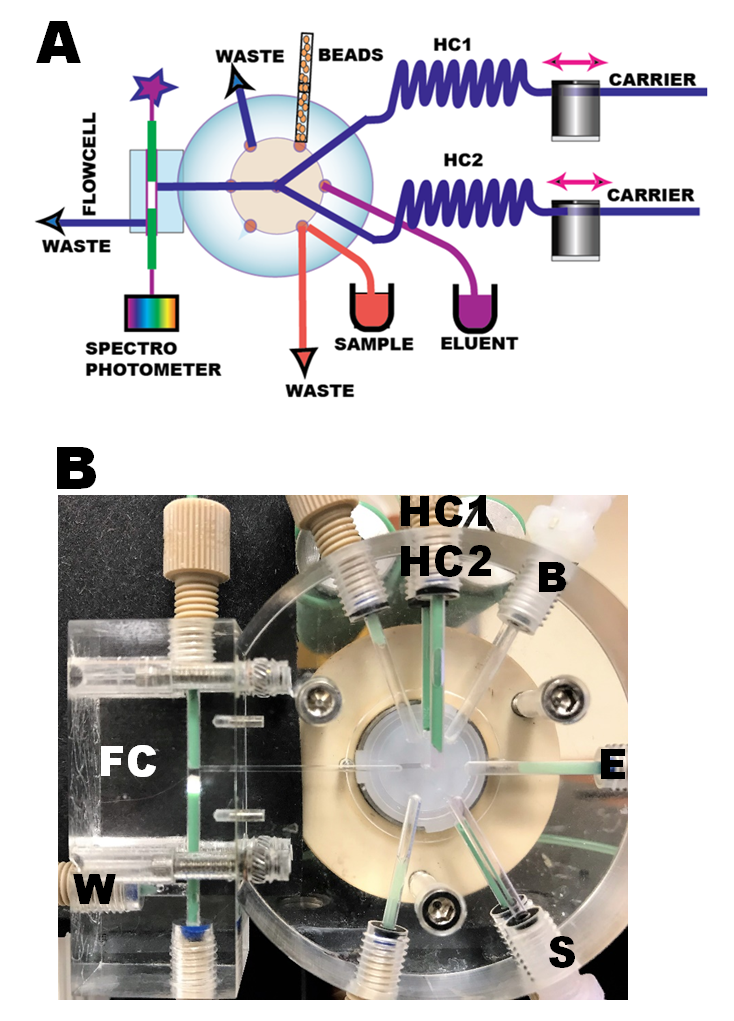There are two ways in which the absorbance of a bead column can be monitored: in radial direction (3.4.1.) or in axial direction (A,B,C). The advantage of axial monitoring is that all beads in the column are illuminated and monitored, while by radial illumination beads above and under the light beam are not monitored. Axial illumination also allows measurement of longer column of sorbent, although this option is limited by transparency of beads and intensity of the available light source. The 2mm thick layer of HBL sorbent, used in the following experiments, had to be illuminated by high intensity LED with max output at 560nm, while integration time of Ocean Optics spectrophotometer was set as high as 200.000.
Axial flow cell is constructed by using the conventional 2cm light path flow cell supplied with miniSIA instrument, and by mounting it “upside down” (B), so that cell outlet (W) is at the bottom. Optical fibers, also supplied with the instrument, are mounted as shown, leaving 3 mm gap (B) to be filled 2/3 with sorbent. Beads are retained in the flow cell by the lower optical fiber, because its sheath has smaller O.D. then I.D. of the flow cell, thus leaving 30 µm gap along fiber’s circumference, through which solution will pass, while larger particles will be retained. The movie clip (C), shows removal of beads by flow reversal and their reloading by forward flow.
BIS in Axial Flow Cell Configuration
3.4.3.A.

C









